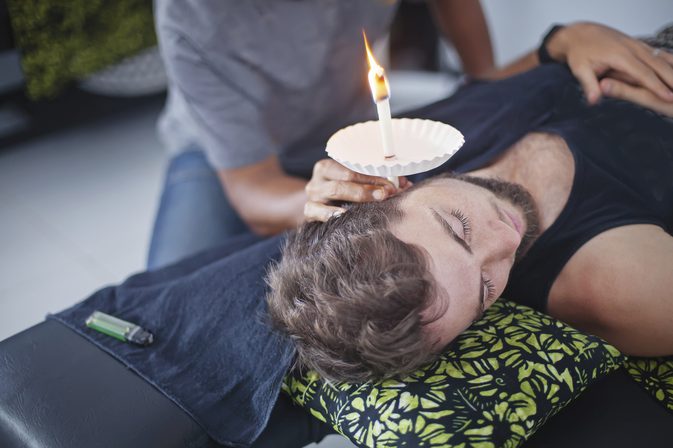Earwax Candling
Earwax candling
Earwax candling, also called candling, coning or auricular candling, involves inserting a specially designed candle into the ear canal. The candle is made of unbleached linen or cotton soaked in beeswax or paraffin wax, explains. The wax-soaked cloth is rolled into a tapered tube approximately 10 to 12 inches long. The narrow end of the tube is inserted into the ear canal and lit.
Earwax candles work in two ways: The burning candle creates a vacuum, and the smoke enters the ear canal, softening the wax and loosening debris caught in the ear. Ear Candling says the smoke seeps through the eardrum and dissolves mucus and other impurities in the sinus passages, turning the debris into a gaseous substance that is then drawn through the eardrum by the negative pressure created by the burning candle. The earwax and impurities collect in the unburned portion of the tube.
Effectiveness
Candling supposedly removes earwax and debris including bacteria, mucus, dead skin cells, yeast infections and fungus from the outer and inner ear canals and sinuses, according to Ear Candling. Candling is thought to improve ear and sinus infections, hearing and smell, headaches, tinnitus (ringing in the ears) and vertigo. Additionally, candling is believed to relieve stress and purify the mind.
Experiments conducted by audiologists failed to support these claims. The amount of negative pressure required to draw out sticky earwax is so high that it would puncture the eardrum. Furthermore, the burning candle produces no measurable vacuum. Analysis of debris collected in the candle found that it is only wax and ashes from the burning wick; no earwax, bacteria or other substances were detected. The outer ear canal is separated from the inner ear and sinus passages by the eardrum. The eardrum is a solid membrane and impurities or smoke cannot pass through it.
Warnings
Ear Candling recommends undergoing earwax candling two to four times a year, and no more than one session every two weeks. The U.S. Food and Drug Administration, however, bans the use of ear candles and the importation of candles. Because the instructions for the candles include health claims, the FDA considers the candles medical devices and has not approved them for use in the United States based on lack of valid evidence proving safety and effectiveness.
To avoid health claims, some candles are labeled “for entertainment purposes only” and remain available. The FDA has received reports of serious injuries associated with ear candles, including burns, punctured eardrums and impacted candle wax deposited in the ear canal that required surgical removal. Consult a health care professional for all ear and sinus infections or to remove impacted earwax, advises the FDA.


